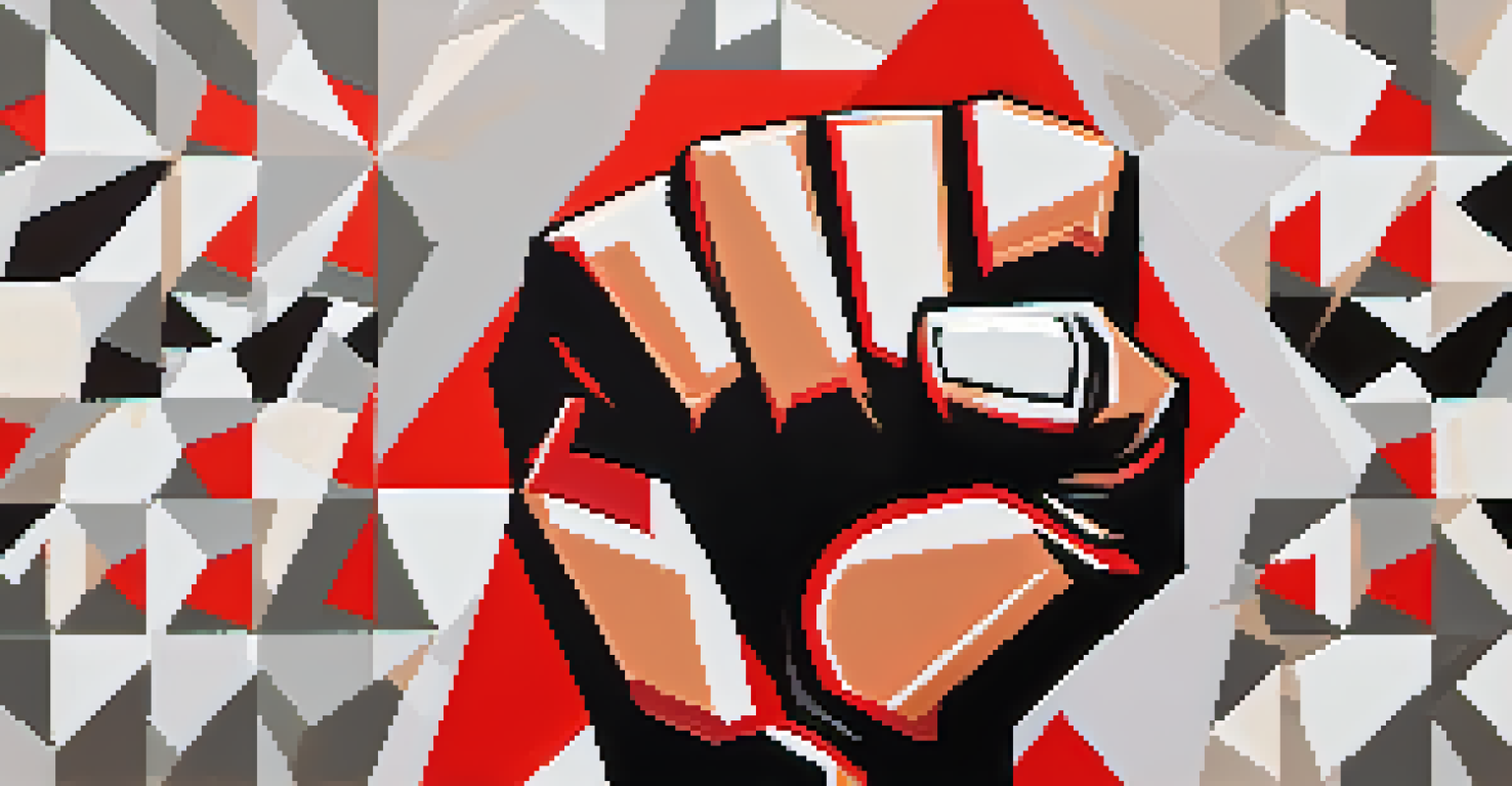Understanding Iconography: Symbols in Art Across Cultures

What is Iconography and Why it Matters
Iconography refers to the visual images and symbols that are used to convey particular meanings or concepts in art. These symbols are deeply rooted in cultural contexts, allowing artists to communicate complex ideas in a visual form. By understanding iconography, we can unlock a deeper appreciation of artworks and their cultural significance.
A picture is worth a thousand words.
For example, a simple image of a dove can symbolize peace across many cultures, while a snake may represent danger or transformation, depending on the context. These symbols help tell stories, express beliefs, and convey emotions that might be difficult to articulate with words alone. Thus, iconography serves as a bridge between the viewer and the artist's intended message.
In exploring iconography, we not only learn about individual artworks but also gain insights into the broader cultural narratives that shape societies. This understanding fosters a greater connection to art and its role in human expression throughout history.
The Role of Cultural Context in Iconography
Cultural context plays a vital role in shaping the meanings behind symbols in art. What might be a revered symbol in one culture could be interpreted quite differently in another. For example, while the lotus flower is a symbol of purity and enlightenment in Hinduism and Buddhism, it may hold little significance in Western cultures.

This variation highlights the importance of understanding the cultural background of an artwork. When viewing art from different cultures, it’s essential to consider the historical, social, and religious influences that inform the use of symbols. This awareness enriches the viewer's experience and deepens their understanding of the piece.
Iconography Connects Art and Culture
Understanding iconography enhances our appreciation of artworks by revealing the cultural meanings behind visual symbols.
Furthermore, cultural exchange over time can lead to the blending of symbols, creating new meanings and interpretations. This dynamic interplay between cultures showcases the evolving nature of iconography and underscores the interconnectedness of human experience.
Common Symbols and Their Meanings
Many symbols appear across various cultures, each carrying its own set of meanings. For instance, the tree of life is a powerful symbol found in numerous cultures, representing growth, strength, and interconnectedness. In Christianity, it symbolizes eternal life, while in Celtic traditions, it reflects the connection between heaven and earth.
Symbols are the language of the soul.
Another common symbol is the circle, often representing unity and wholeness. In Native American cultures, circles are used in rituals and ceremonies to signify the cycle of life. This shared use of symbols across cultures highlights universal human themes, despite differing interpretations.
Understanding these common symbols allows us to appreciate the shared experiences that unite us, even in our diverse expressions of art. It reminds us that while our cultures may differ, the human experience often resonates on similar frequencies.
Religious Iconography: A Global Perspective
Religious iconography is perhaps one of the most profound examples of how symbols convey deep spiritual meanings. In Christianity, the cross represents sacrifice and redemption, while in Islam, the crescent moon and star symbolize faith and guidance. These symbols serve as visual shorthand for complex beliefs and narratives.
Each religion employs iconography to communicate its teachings, values, and stories. For instance, Hindu deities are often depicted with multiple arms, symbolizing their divine powers and abilities. This use of iconography allows followers to connect with their faith on a more profound level, often evoking strong emotions.
Cultural Context Shapes Symbol Meaning
The significance of symbols in art varies across cultures, highlighting the importance of cultural context in interpretation.
By exploring religious iconography across cultures, we gain insights into the diverse ways humans seek to understand the divine. This shared quest for meaning through symbols illustrates the universal nature of spirituality, transcending cultural boundaries.
Iconography in Modern Art: New Interpretations
In modern art, traditional symbols are often reinterpreted, reflecting contemporary issues and ideas. Artists may use familiar icons to challenge societal norms or provoke thought, creating a dialogue between the past and the present. For example, the use of corporate logos in pop art critiques consumer culture, transforming recognizable symbols into commentary on modern life.
This evolution of iconography showcases how artists adapt symbols to express new meanings, often reflecting the complexities of modern existence. The reinterpretation of symbols invites viewers to engage critically with the artwork and consider its relevance in today's world.
Furthermore, this shift also highlights the fluidity of iconography, as artists borrow from various cultures and histories. This blending not only enriches the artwork but also fosters cross-cultural conversations, emphasizing the shared human experience in an increasingly globalized society.
The Importance of Iconography in Cultural Identity
Iconography plays a crucial role in shaping cultural identity, as symbols often reflect the values, beliefs, and traditions of a community. For many cultures, specific symbols serve as a source of pride and unity, reminding individuals of their shared heritage. For instance, the eagle is a national symbol in the United States, representing freedom and strength.
By embracing and promoting these symbols, communities reinforce their cultural narratives and foster a sense of belonging. Iconography can thus become a powerful tool for preserving history and identity, especially in a world where globalization often threatens local traditions.
Symbols as Tools for Social Change
Artists utilize iconography to address social issues, using symbols to provoke thought and inspire dialogue.
Additionally, as cultures evolve, so do their symbols. New generations reinterpret these icons, allowing for a dynamic expression of identity that honors the past while embracing the future. This ongoing dialogue between tradition and modernity is vital for cultural sustainability.
Iconography and Social Commentary in Art
Artists often use iconography to comment on social issues, weaving symbols into their work to provoke thought and inspire change. For example, the use of protest symbols, like the raised fist, has become an emblem of resistance and solidarity across various movements. This powerful imagery conveys a message that resonates deeply with audiences, transcending language barriers.
Through the lens of iconography, artists can challenge societal norms, question authority, and raise awareness about pressing issues. This practice not only empowers the artist but also engages the viewer, encouraging them to reflect on their own beliefs and actions.

In essence, iconography serves as a visual language through which artists can articulate their perspectives, fostering dialogue and awareness. By examining these symbols, we can gain a better understanding of the social landscape and the role art plays in advocating for change.